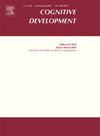不同社会类别的疾病易感性差异:COVID-19与损伤的比较
IF 1.8
3区 心理学
Q3 PSYCHOLOGY, DEVELOPMENTAL
引用次数: 0
摘要
这项研究询问了日本儿童和成人,根据社会类别(年龄、性别、收入、教育程度、社交能力、道德),感染COVID-19或受伤的可能性是否有所不同。参与者是200名非医疗专业人员的成年人(研究1),36名5-6岁的儿童,32名10-11岁的儿童和34名大学生(研究2)。成年人和儿童都认为老年人比年轻人更容易感染COVID-19和受伤。但是,所提供的理由有所不同。儿童通常提供行为解释(例如,“年轻人不戴口罩”),成年人提供生物解释(例如,“老年人免疫系统较弱”)和社会结构解释(例如,“穷人看不起医生,只能从事感染风险高的工作。”)将这些结果与美国之前的研究结果进行比较后发现,美国人估计年龄和收入对感染易感性的差异比日本人更大。相反,日本人认为道德方面的差异比美国人更大。然而,在儿童中没有观察到这种文化差异。因此,我们将讨论如何根据社会情境和文化信仰来理解一种疾病。本文章由计算机程序翻译,如有差异,请以英文原文为准。
Differences by social category in illness susceptibility: Comparison between COVID-19 and injury
This study asked Japanese children and adults whether the likelihood of catching COVID-19 or being injured differed according to social categories (age, gender, income, education, sociability, morality). The participants were 200 adults who were not medical professionals (Study 1), 36 children aged 5–6 years, 32 children aged 10–11 years, and 34 university students (Study 2). Both adults and children believed that older people were more vulnerable to COVID-19 and injuries than younger people. However, differences were observed in the reasons provided. Children often provided behavioral explanations (e.g., “young people do not wear masks”) and adults provided biological (e.g., “older adults have a weakened immune system”) and social structural explanations (e.g., “poor people cannot afford to see a doctor and can only take jobs with a high risk of infection.”) Comparison of these results with previous research in the US revealed that Americans estimated the difference in susceptibility to infection to be greater by age and income than the Japanese. Conversely, the Japanese estimated the difference to be greater by morality than Americans. However, this cultural difference was not observed in children. Accordingly, we discuss how understanding of an illness is based on social situations and cultural beliefs.
求助全文
通过发布文献求助,成功后即可免费获取论文全文。
去求助
来源期刊

Cognitive Development
Multiple-
CiteScore
3.20
自引率
5.60%
发文量
114
期刊介绍:
Cognitive Development contains the very best empirical and theoretical work on the development of perception, memory, language, concepts, thinking, problem solving, metacognition, and social cognition. Criteria for acceptance of articles will be: significance of the work to issues of current interest, substance of the argument, and clarity of expression. For purposes of publication in Cognitive Development, moral and social development will be considered part of cognitive development when they are related to the development of knowledge or thought processes.
 求助内容:
求助内容: 应助结果提醒方式:
应助结果提醒方式:


